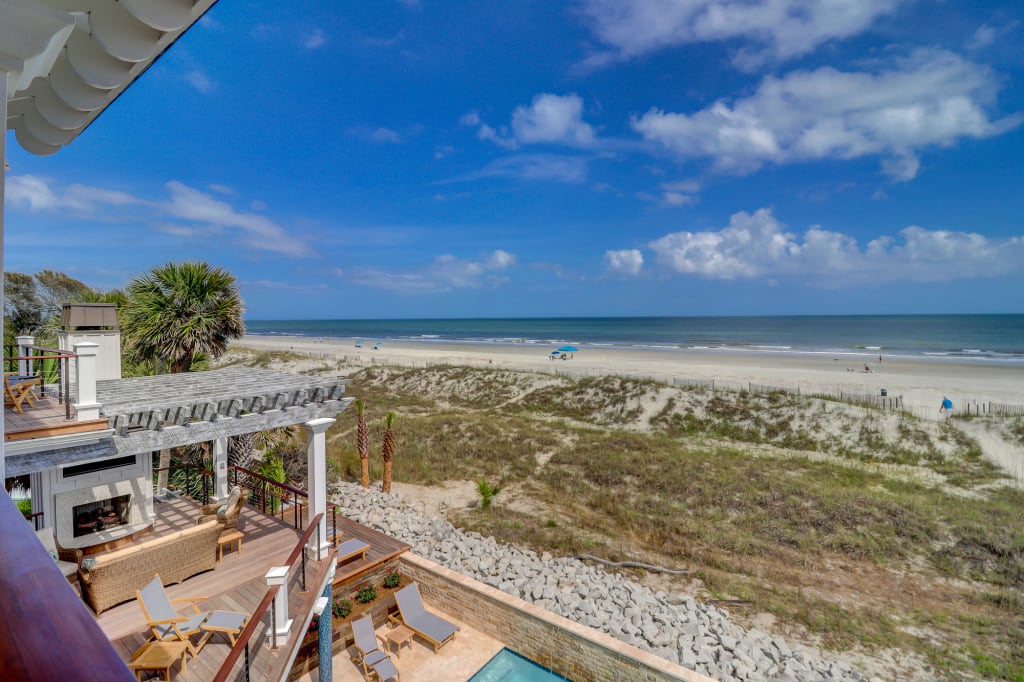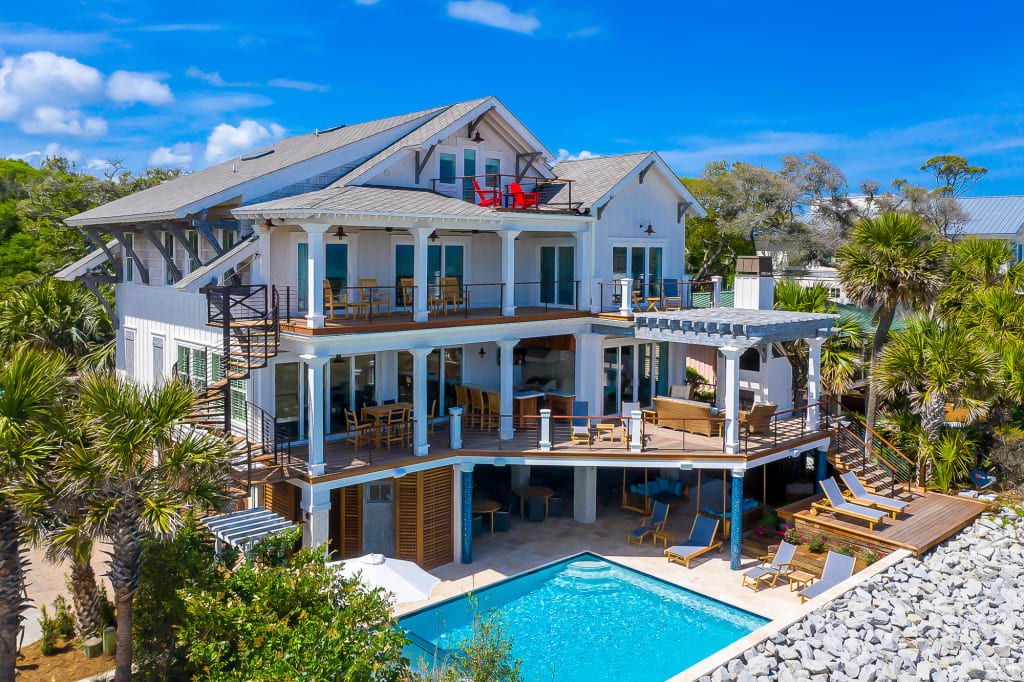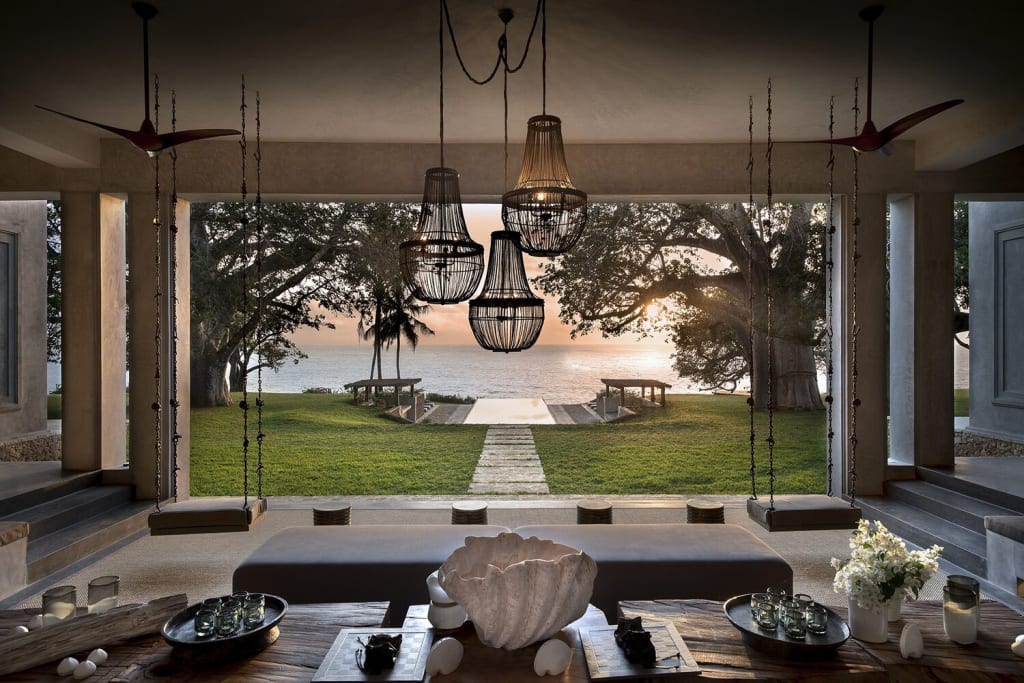Wildlife Wonders: Discovering Hilton Head Island’s Native Flora and Fauna
Hilton Head Island, known for its pristine beaches and world-class golf courses, is also a haven for nature enthusiasts. Beyond the sun and sand, the island is home to a rich tapestry of native flora and fauna, offering residents and visitors alike a unique opportunity to experience the Lowcountry's natural beauty up close. This detailed guide will take you through the island’s diverse ecosystems, highlight the local wildlife, and share the best spots for birdwatching and nature exploration.
The Ecosystems of Hilton Head Island
Hilton Head Island boasts a variety of ecosystems, each supporting its own distinct community of plants and animals. From maritime forests and salt marshes to freshwater wetlands and sandy dunes, the island's landscapes are as diverse as they are beautiful.
1. Maritime Forests
Maritime forests are a defining feature of Hilton Head Island, characterized by dense canopies of live oaks, palmettos, and magnolias. These forests are critical habitats for a wide range of wildlife, providing shelter and food for numerous species.
Flora:
- Live Oaks: These iconic trees, often draped in Spanish moss, are a hallmark of the Lowcountry landscape. They provide shade and shelter for many animals and are crucial to the ecosystem.
- Palmettos: The state tree of South Carolina, palmettos thrive in the sandy soils of the maritime forests, adding to the island's distinctive coastal character.
- Magnolias: Known for their large, fragrant flowers, magnolias add a touch of beauty to the dense forest understory.
Fauna:
- White-Tailed Deer: These graceful creatures are commonly seen in the early mornings or late afternoons, grazing on the vegetation that thrives in the forests.
- Gray Squirrels: Often seen darting up trees or foraging on the ground, gray squirrels are a common sight in the island’s wooded areas.
- Raccoons: Nocturnal by nature, raccoons can be spotted near forest edges, especially where they have access to water sources.
2. Salt Marshes
The salt marshes of Hilton Head Island are among the most productive ecosystems on Earth, teeming with life. These tidal wetlands are characterized by their tall grasses, which sway with the ebb and flow of the tides.
Flora:
- Spartina Grass: The dominant vegetation in the salt marshes, Spartina (also known as cordgrass) plays a vital role in the marsh ecosystem, stabilizing the soil and providing habitat for various species.
- Glasswort: A succulent plant found in salt marshes, glasswort is adapted to the saline environment and is an important food source for local wildlife.
Fauna:
- Blue Crabs: These crustaceans are abundant in the salt marshes and are a key species in the food web, feeding on detritus and small animals while serving as prey for birds and fish.
- Great Egrets: Easily recognizable by their long, white feathers and elegant stature, great egrets are often seen wading through the marshes in search of fish and amphibians.
- Diamondback Terrapins: These unique turtles are native to the brackish waters of the salt marshes and are known for their distinctive patterned shells.
3. Freshwater Wetlands
Hilton Head's freshwater wetlands are lush, green areas that provide crucial habitat for a variety of wildlife. These areas are often found near ponds, lakes, and rivers, where water levels fluctuate with the seasons.
Flora:
- Cypress Trees: Known for their “knees” that protrude from the water, cypress trees are a staple of freshwater wetlands, providing habitat for a range of species.
- Pickerelweed: This flowering plant grows in the shallow waters of wetlands and is easily recognized by its vibrant purple-blue flowers.
- Water Lilies: These floating plants add a splash of color to the wetland waters and provide shelter for fish and invertebrates.
Fauna:
- American Alligators: A common sight in the freshwater wetlands, American alligators are an iconic species of the Lowcountry, often seen basking on the banks or swimming slowly through the water.
- Green Herons: These small, stealthy birds are adept hunters, often spotted perched near the water’s edge, waiting to catch fish or amphibians.
- River Otters: Playful and social, river otters are a delight to observe as they swim and frolic in the wetlands.
4. Sandy Dunes and Beaches
The sandy dunes and beaches of Hilton Head Island are more than just picturesque spots for sunbathing—they are critical habitats for a range of wildlife, especially nesting sea turtles and shorebirds.
Flora:
- Sea Oats: These tall grasses are crucial for stabilizing sand dunes, helping to prevent erosion while providing habitat for birds and insects.
- Beach Morning Glory: This hardy, low-growing plant with vibrant flowers is often seen creeping across the dunes, its roots helping to anchor the shifting sands.
- Panic Grass: Another important dune stabilizer, panic grass is well adapted to the harsh conditions of the coastal environment.
Fauna:
- Loggerhead Sea Turtles: Hilton Head's beaches are important nesting grounds for loggerhead sea turtles, which return year after year to lay their eggs in the soft sand.
- Piping Plovers: These small, sandy-colored shorebirds are often seen scurrying along the water’s edge, feeding on insects and small crustaceans.
- Ghost Crabs: Named for their pale, almost translucent color, ghost crabs are a common sight on Hilton Head’s beaches, especially at dawn and dusk.
Birdwatching on Hilton Head Island
Hilton Head Island is a premier destination for birdwatching, offering enthusiasts a chance to observe a wide variety of species in their natural habitats. From the majestic osprey to the colorful painted bunting, the island’s birdlife is as diverse as it is captivating.
Top Birdwatching Spots:
- Pinckney Island National Wildlife Refuge: Just a short drive from Hilton Head, this refuge is a haven for birdwatchers, with over 250 species of birds recorded. The trails wind through salt marshes, freshwater ponds, and maritime forests, offering numerous opportunities to spot a variety of birds, including egrets, herons, and wood storks.
- Audubon Newhall Preserve: This small but rich preserve is home to many species of birds, especially during migration periods. Look out for warblers, woodpeckers, and hawks as you explore the peaceful trails.
- Fish Haul Creek Park: Located on the northern end of the island, this park is a great spot for watching shorebirds, such as sandpipers and plovers, as well as waterfowl in the nearby marshes.
Experiencing Nature on Hilton Head Island
For those looking to immerse themselves in Hilton Head’s natural beauty, the island offers a variety of activities that allow you to experience its rich flora and fauna up close.
1. Kayaking and Paddleboarding
Exploring the island’s waterways by kayak or paddleboard is a fantastic way to see wildlife in its natural habitat. Paddle through the salt marshes to get a close-up view of birds, fish, and even dolphins. Guided eco-tours are available for those who want to learn more about the island’s ecosystems from knowledgeable naturalists.
2. Nature Walks and Hiking
Several parks and nature preserves on Hilton Head offer well-maintained trails that are perfect for a leisurely walk or a more strenuous hike. The Sea Pines Forest Preserve and the trails at Pinckney Island are particularly popular for their scenic beauty and abundant wildlife.
3. Wildlife Tours
For a more guided experience, consider joining a wildlife tour. These tours, led by local experts, can take you to the best spots on the island for birdwatching, alligator sightings, and more. Boat tours are also available, offering a chance to see the island’s marine life, including dolphins and sea turtles.
Conclusion
Hilton Head Island is not just a destination for beachgoers and golfers—it’s a sanctuary for wildlife and a paradise for nature lovers. The island’s diverse ecosystems, from its maritime forests and salt marshes to its freshwater wetlands and sandy dunes, support a rich array of native flora and fauna that are waiting to be discovered. Whether you’re an avid birdwatcher, a casual nature enthusiast, or simply someone who appreciates the beauty of the natural world, Hilton Head offers countless opportunities to connect with nature and experience the wonders of the Lowcountry. So grab your binoculars, lace up your hiking boots, or hop on a kayak, and start exploring the wildlife wonders of Hilton Head Island.















